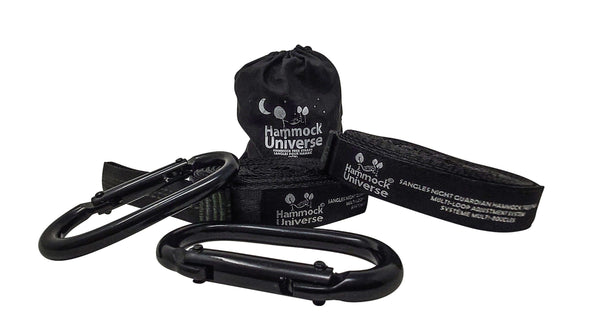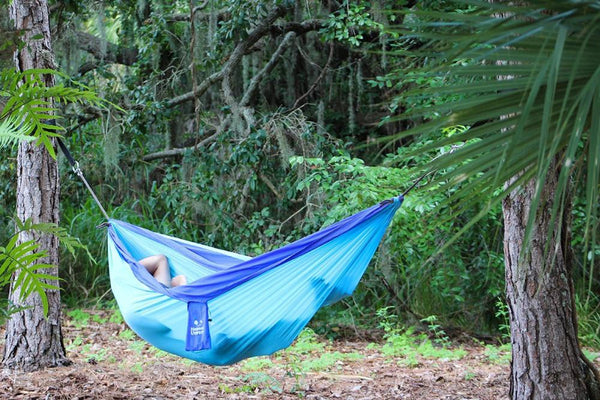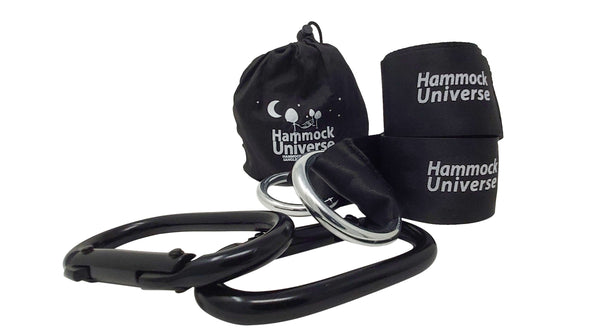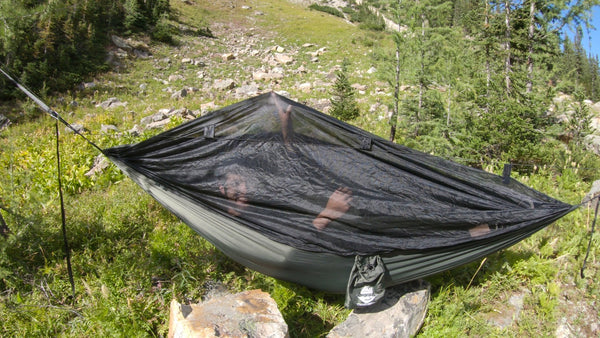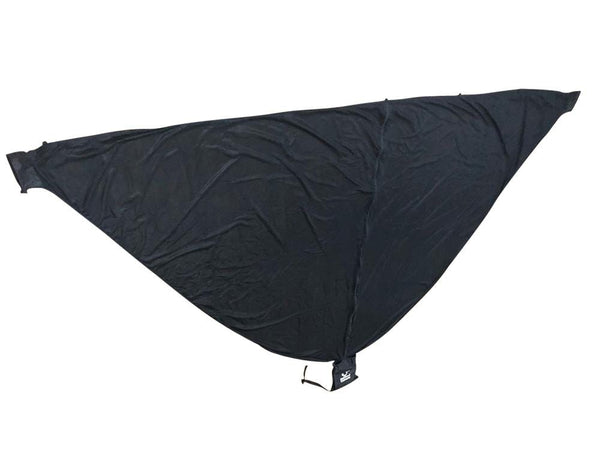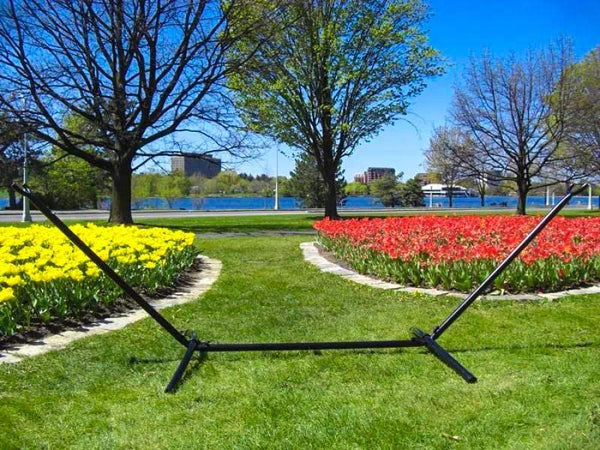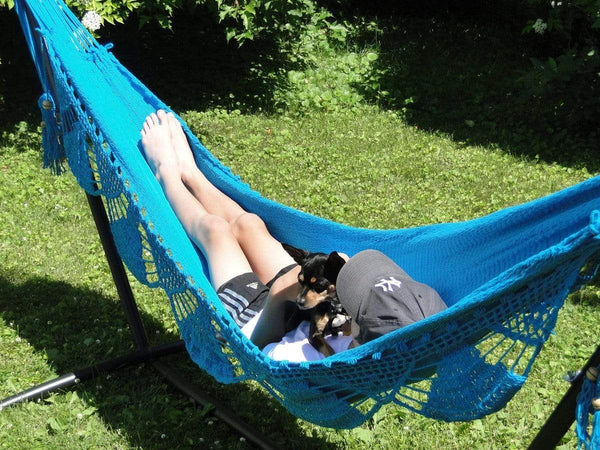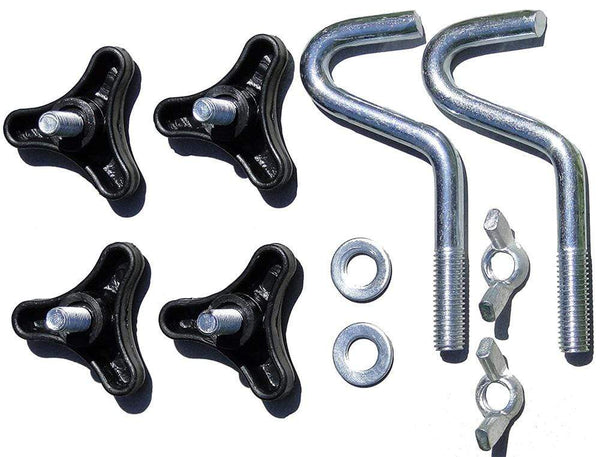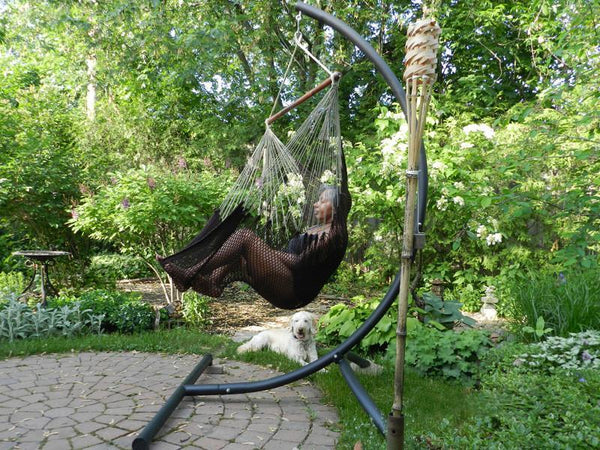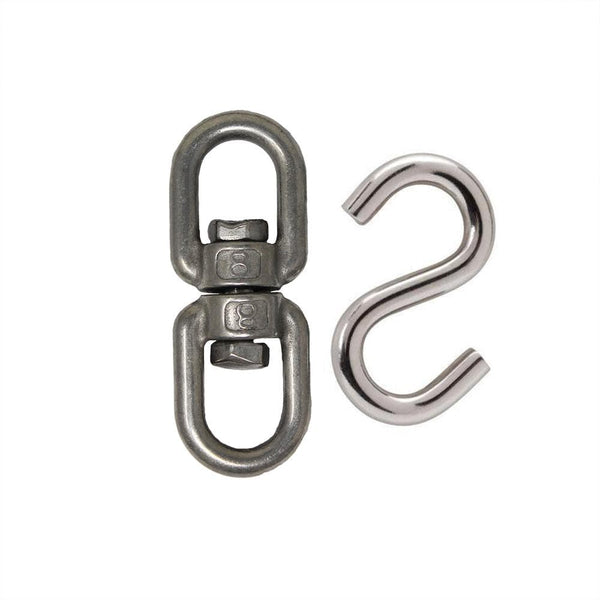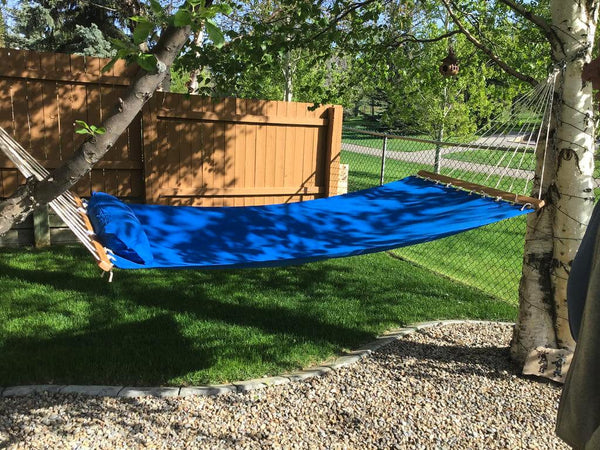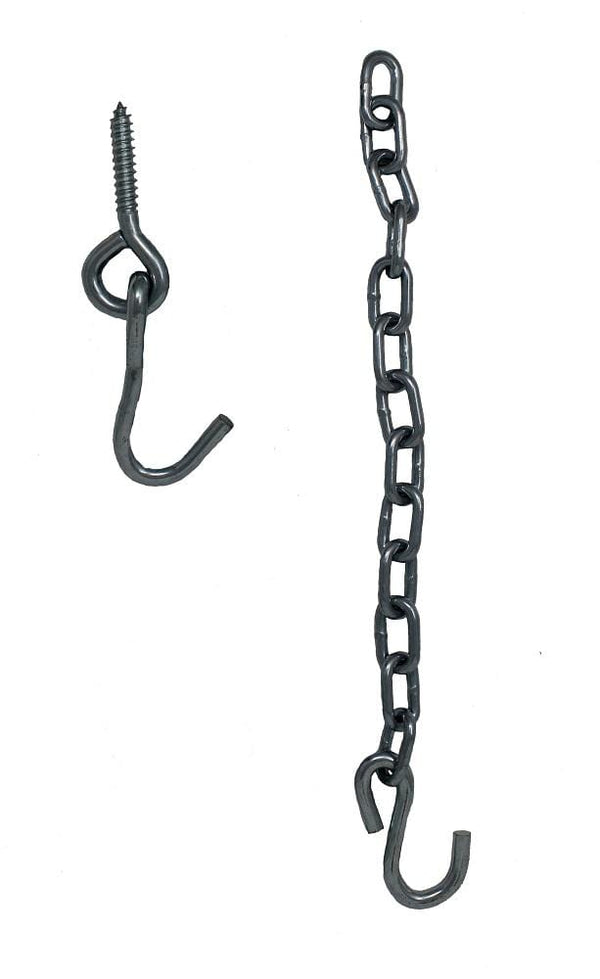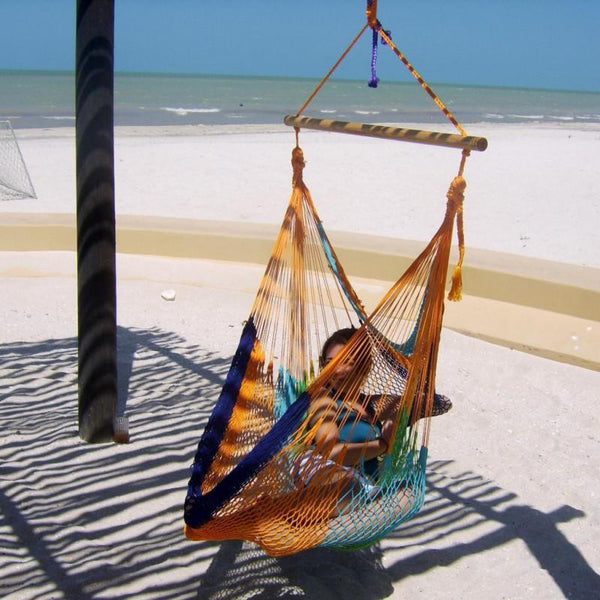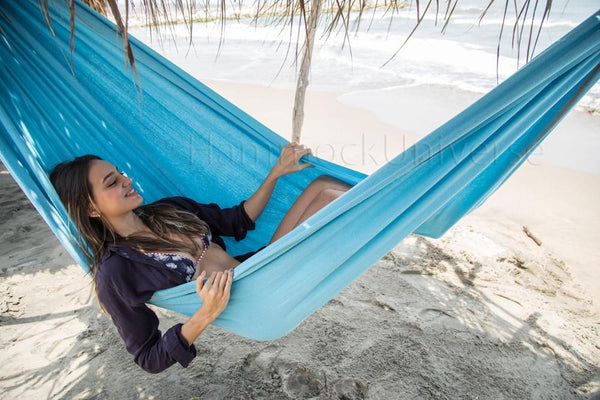FREE SHIPPING on most orders $25+ HAMMOCK BUYING GUIDE
Menu
-
-
Hammocks
-
Hammock Stands
-
Hammocks with Stands
-
Hanging Hammock Chairs
- View all Hammock Chairs
- Brazilian Style Hammock Chairs
- Colombian Hammock Chairs
- Mayan Hammock Chairs
- Mayan Hammock Chairs Deluxe
- Universal Hammock Chair Stand
- U Hammock Chair Stand
- Brazilian Hammock Chair with Universal Chair Stand
- Colombian Hammock Chair with Universal Chair Stand
- Mayan Hammock Chair with Universal Chair Stand
- Mayan Hammock Chair Deluxe with Universal Stand
-
Accessories
- Gift Cards
- Tools and Guides
- Bargain Bin
-
- 1-800-207-4761
- Login

FREE SHIPPING on most orders $25+ HAMMOCK BUYING GUIDE
10 Tips for Hammock Camping Like A Pro
September 16, 2021 6 min read
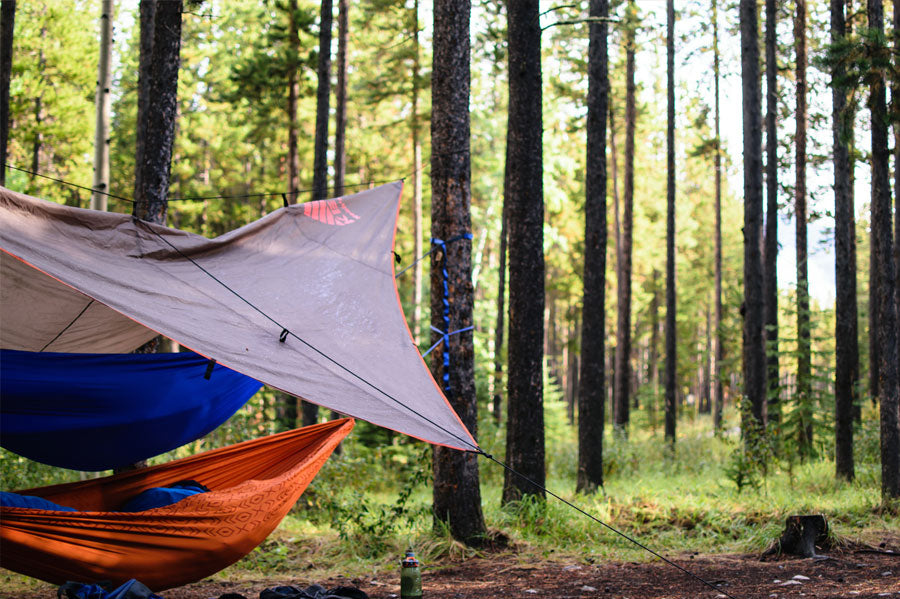
From Using Straps Properly to Picking the Perfect Location, Here’s What You Need to Know About Camping With Hammocks in Canada
You’ve got hammock hanging down to an art, but what about hammock camping?
Sure, you know how to set up and hang your hammock from trees. But what about the nitty-gritty survival tips that will take your camping experience from good to exceptional?
We’ve put together 10 essential hammock camping tips and tricks to make your hammock camping so unforgettable you won’t want to come back to reality.
Just make sure you tell your friends and family where you are if you don’t come home after the long weekend!
Hammock Camping FAQs
What is Hammock Camping?
Hammock camping is just like regular camping. The main difference is that instead of sleeping in a tent, you sleep in a special hammock designed specifically for camping that is hung between two trees.
What are the Benefits Compared to Traditional Tent Camping?
There are numerous benefits of camping in a hammock, the most significant being:
Comfort: Sleeping in a hammock is significantly more comfortable than sleeping on the ground, and offers more back support. Plus, the swaying motion of the hammock helps ensure a deeper, more enjoyable sleeping experience.
Weight: Hammocks are great for camping because they are very lightweight compared to tents and can easily be carried in your pack.
Convenience: Hammocks are much easier to set up and take down compared to a tent. All you need are two trees spaced well enough apart to hang your hammock and then you can hang your hammock easily in just a few minutes. This also means you have more options for where you decide to set up camp, as you don't have to worry about the condition of the ground.
Can You Use Any Hammock?
Since all hammocks are designed for sleeping, theoretically, you can bring any hammock with you on your camping trip. However, we recommend using a camping hammock that is lightweight and designed to withstand the elements, and can easily be folded and packed away.
Is it Comfortable?
Yes! As previously mentioned, sleeping in a hammock is one of the most comfortable ways to sleep. Plus, it's way more comfortable than sleeping on the cold, hard, uneven ground.
How do You Not Get Cold?
The key to staying warm while hammock camping is to make sure you have an underquilt, sleeping pad, and a warm sleeping bag. If you are camping in cooler weather, we also recommend dressing in layers to ensure you are properly protected from the cool nighttime air.
READ MORE: A BEGINNER’S GUIDE TO HAMMOCK CAMPING
Hammock Camping Tips For Beginners
Itching to learn more? Here are some additional tips for making the most out of your hammock camping experience.
TIP 1: USE TREE-SAVER STRAPS
One of the benefits of hammock camping is that you can have minimal impact on your campsite, including plants and wildlife. You don’t have to level the ground, make a trench, or push stakes in the ground since you won’t be pitching a tent.
But you do have to hang your hammock from trees.
The only way to do this without hurting the trees is to use hammock tree straps. These are also known as tree-saver straps because they minimize damage to the bark and cambium layer of the tree.
Use wide (about 1 to 2 inches) polyester webbing tree straps that go around a tree, disperse weight, and minimize girdling effects; never use anything made of a non-tree-friendly material, such as plastic zip cords, nails, or screws.
TIP 2: NEVER HANG YOUR HAMMOCK FROM DEAD TREES
Dead trees are not stable enough to support your weight, plain and simple.
They could break or fall, causing you serious harm and damage to the area. Do yourself a favour and only hang your hammock on sturdy, thick, and healthy trees.
If you’re unsure if a tree is dead, check around for dead branches.
You can also check for fallen debris. You probably don’t want to be hit in the head with an acorn, or worse, a dead branch, while you’re sleeping.
TIP 3: HANG YOUR HAMMOCK AT LEAST 200 FEET AWAY FROM A WATER SOURCE
For your safety, and for the safety of unique plant habitats near water, set your hammock camp at least 200 feet from any water source.
The area between land and a river or stream is called the riparian zone or riparian area.
The plant habitats along river margins and banks, otherwise known as riparian vegetation, are important for keeping soil stable and preventing land erosion.
It’s okay to hang by the beach, but if you’re going to be spending some time in the area, respect the nearby flora and land.
TIP 4: HANG YOUR HAMMOCK AT THE RIGHT HEIGHT (AND WITH A GOOD SAG)
For ease of use, hang your hammock at a comfortable sitting height. This will allow you to easily sit in your hammock without worry of flipping over.
Another way to prevent flipping hammocks and discomfort is to hang your hammock with a deep sag, curved like a smile.
This can be achieved by hanging your hammock at a 30-degree angle from the anchor points.
A deep sag lowers the centre of gravity, improving the stability of your hammock. This lower centre of gravity also helps prevent that frustrating cocooning effect, endemic among tightly hung hammocks.
Hammocks are supposed to be relaxing and comfortable, not trying to eat you and toss you over. Follow this advice, and you’ll have a leisurely hang every time.
Check Out Our Hammock Hang Calculator
TIP 5: PROPERLY CHECK FOR HIDDEN DANGERS AND WILDLIFE
Hidden dangers include dead trees and trees that are too thin to support your weight. Trees should be alive and thick enough so that you can’t wrap both of your hands around it completely.
There should also be very minimal ground cover between the trees.
Keep an eye out for roots and lichen that you could easily trip or slip on.
Be sure to check for hidden hazards, such as wasp nests and poisonous plants. If you come across any dangers, you might want to consider finding a new campsite.
TIP 6: RESEARCH YOUR CAMPING GROUND
Whether you’re going to a free camping site in Canada, or you’re paying for the site, do some research on the campground before you go. Double-check that there are no bans on hammock camping.
While this may sound odd, some places might have endangered trees or trees that are not strong enough to support hammock campers.
There are some local government regulations that may ban the use of hammocks in parks, so always check before you go.
TIP 7: BREAK DOWN YOUR HAMMOCK WHENEVER YOU LEAVE (EVEN IF IT’S JUST FOR AN HOUR OR LESS)
If you’re going for a hike, swim, or paddle, or you’re leaving your campsite unattended just for a short time, break down your hammock. This will prevent animals and small children from getting tangled in your hammock.
Remember, you’re sharing the land with other animals, so don’t make it hazardous for them. Keep your campsite clean and leave no trace.
This is important for all types of camping and makes for one of the best lightweight camping tips. The less stuff you have to carry, the less of an impact you’ll leave as well.
TIP 8: USE A HAMMOCK WITH BUILT-IN MOSQUITO NETTING
Flying bugs, whether flies, moths, midges, or mosquitoes, can ruin a good night’s sleep in a hammock.
So, to prevent all those annoying bugs from buzzing by your ears, flying on your face, and biting you all night, opt for a hammock that comes with a mosquito net.
A hammock with built-in netting offers you protection from all the critters while you sleep.
You can be safe away from their wings and stingers and make the most of your comfortable sleep hanging under the stars.
TIP 9: USE A DRIP LINE
Along with using a tarp, use a drip line to help keep you dry in your hammock on rainy days and nights. Simply tie a rope or string on your hammock suspension cord, leaving two long ends of the rope or string hanging down.
You can also tie drip lines on your hammock tarp suspension for added protection from the rain.
Drip lines prevent water from seeping down the suspension and soaking your hammock.
Instead of flowing down to your hammock, the rainwater will flow to the lowest point, which will be the ends of the drip lines.
TIP 10: LAY DIAGONALLY ACROSS YOUR HAMMOCK AND RAISE YOUR FOOT END SLIGHTLY HIGHER
If you were ever curious about how to sleep in your hammock properly, here’s the answer: lie on the diagonal.
Instead of trying to sleep in line with the hammock, angle your body just slightly askew of the center. This will put you in an ergonomically flat position, removing all pressure points, and giving you the most comfortable sleep.
To prevent your body from sliding down to the middle of your hammock while you sleep, hang the foot of the hammock 8 to 10 inches higher than the other side.
Make the most of your camping this summer with these hammock tricks and tips. Hammock camping can be a comfortable, relaxing experience, especially when you know what you’re doing. So go from hammock camping beginner to pro with these expert tips in mind!
Safety First!
When using a hammock*, safety is paramount. Please make sure to follow these important guidelines when purchasing, installing and using a hammock
*(includes Hammock, Hammock Chair, Hammock Stand and Hammock Accessories)
Safety First!
When using a hammock*, safety is paramount. Please make sure to follow these important guidelines when purchasing, installing and using a hammock
*(includes Hammock, Hammock Chair, Hammock Stand and Hammock Accessories)
Related Products
Want to relax?
Join for exclusive content and promotions we only give to our email list!
